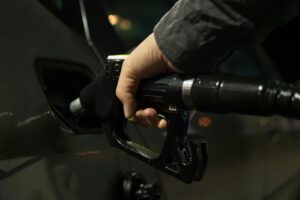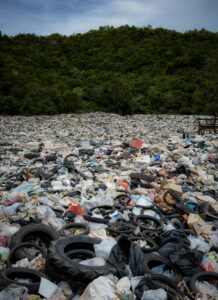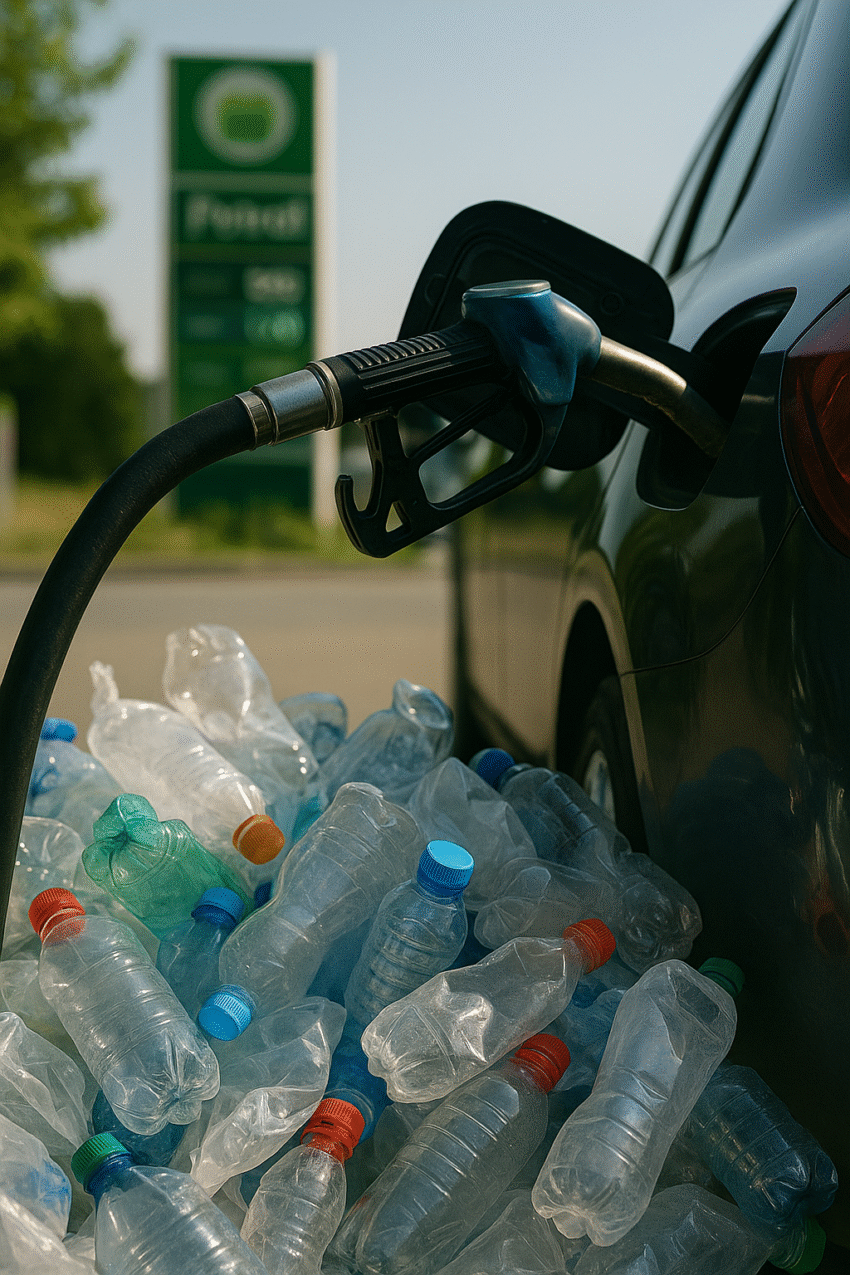You might’ve heard the claim: plastic waste can be turned into petrol fuel for cars. Short answer? Yes, it’s scientifically possible. Through a chemical process called pyrolysis, plastic can be broken down into liquid fuels similar to petrol or diesel. But before you get too excited about fueling your car with old soda bottles, there’s a lot more to the story you need to know. Let me walk you through it.
What Does It Mean to Turn Plastic into Fuel?
In simple terms, turning plastic into fuel means converting discarded plastic materials into usable petroleum-based fuels like diesel, petrol, or kerosene.
Plastic is primarily made from hydrocarbons—the same basic building blocks found in crude oil. So when treated properly, plastic can be broken back down into a form similar to the fossil fuels we traditionally extract from the earth.
From what I’ve seen, the technology isn’t just theoretical—it’s already happening in specialized facilities around the world. But it’s not quite as simple as throwing plastic into a machine and pouring out clean gasoline. There’s a chemical science behind it, and it involves a process known as pyrolysis.
How Does the Process of Turning Plastic into Petrol Work?
Pyrolysis is the main method used to convert plastic into fuel. Here’s how it works in a nutshell:
-
Heating Without Oxygen: Plastic waste is heated to high temperatures (typically between 300°C and 500°C) in an oxygen-free environment.
-
Breaking Down Molecules: The heat breaks the long polymer chains in the plastic into shorter chains, producing gases, oils, and char (a solid residue).
-
Condensation: The vaporized hydrocarbons are then cooled and condensed into liquid fuels like diesel, petrol, or even jet fuel.
In my experience researching this area, one thing is clear: pyrolysis is incredibly efficient in controlled environments, but it does require significant energy input to maintain those high temperatures.
Quick Breakdown of Pyrolysis Output:
-
Liquid oil (usable as fuel after refining)
-
Syngas (can be used to power the process itself)
-
Solid residue (char or ash)
Why Are People Interested in Turning Plastic Into Fuel?
There are a couple of big reasons why this idea has caught global attention:
-
Plastic Waste Crisis: We’re drowning in plastic waste. According to the United Nations, about 400 million tons of plastic are produced globally each year, and less than 10% gets recycled properly.
-
Alternative Energy Source: If we can recover fuel from plastic, it reduces dependence on traditional fossil fuels.
-
Circular Economy: Turning plastic into fuel fits the idea of a circular economy, where waste products are reintroduced into the system as new resources.
In my view, it’s a win-win situation—less plastic in landfills and oceans, and more fuel for industries and vehicles.
What Types of Plastics Can Be Converted into Petrol?
Not all plastics are created equal. Some are better suited for pyrolysis than others. Here’s a quick guide:
-
Polyethylene (PE) – found in plastic bags and bottles
-
Polypropylene (PP) – used in food containers and automotive parts
-
Polystyrene (PS) – think foam cups and packing materials
These plastics have relatively simple polymer structures, making them ideal candidates for conversion into fuel.
However, plastics like PVC (polyvinyl chloride) are tricky. They release toxic chlorine gas during pyrolysis and can contaminate the fuel if not treated properly. That’s why, from what I’ve seen, most commercial plastic-to-fuel operations sort and pre-treat the waste before processing.
Is Plastic-Derived Petrol the Same as Regular Petrol?

Not exactly. While plastic-derived petrol shares many chemical properties with conventional petrol, it often requires additional refining to meet the strict standards needed for modern car engines.
Here’s the difference in simple terms:
-
Plastic-derived fuel tends to be heavier, closer to diesel in its raw form.
-
Commercial petrol undergoes extensive refining, adding various additives for engine performance and emissions control.
In short, the fuel produced from plastic isn’t “pump-ready” when it comes out of the reactor. It needs post-processing to be safely used in vehicles.
How Efficient and Sustainable Is This Technology?
From everything I’ve researched, pyrolysis is promising but not perfect. Here’s what you should know:
Advantages:
-
Reduces plastic waste.
-
Produces valuable fuels.
-
Can be self-sustaining (using syngas to power itself).
Disadvantages:
-
High initial investment costs.
-
Energy-intensive process.
-
Still emits some greenhouse gases.
In my opinion, while it’s not a silver bullet, it’s definitely a step in the right direction. Especially when paired with renewable energy sources to power the pyrolysis plants, it could significantly cut down on both waste and emissions.
Are There Real-World Examples of Plastic Being Turned into Fuel?
Absolutely! Let me tell you about a few examples:
-
Plastic Energy (UK/Spain): One of the leading companies, Plastic Energy, has operational plants that turn end-of-life plastics into a product called TACOIL, used to make new plastics or fuels.
-
Agilyx (USA): Specializes in turning polystyrene back into its original monomer, which can then be refined into fuel.
-
Renewlogy (USA/Canada): They focus on converting mixed plastics into synthetic crude oil.
These real-world operations show that the technology isn’t just lab science—it’s being used commercially. But scaling it up to make a big dent in global waste is still a work in progress.
How Much Plastic Is Needed to Produce One Gallon of Fuel?

On average, 8 to 10 pounds of plastic are needed to produce one gallon of fuel.
To give you an idea:
-
A standard plastic grocery bag weighs about 5 to 7 grams.
-
You’d need thousands of bags just to produce a few gallons of fuel.
In my experience, one of the biggest challenges here is the logistics—collecting, sorting, and cleaning the plastic waste efficiently enough to make the economics work.
What Are the Future Prospects for Plastic-to-Fuel Technology?
Looking ahead, I personally believe that plastic-to-fuel has a real shot at becoming a mainstream solution—if a few challenges are tackled:
-
Scaling up the technology affordably.
-
Reducing emissions from the conversion process.
-
Creating regulations and incentives for companies to invest.
With global momentum around reducing plastic waste and fighting climate change, I expect to see more investment in this sector over the next 5 to 10 years.
Conclusion
So, is it true that plastic can be turned into petrol fuel for cars? Absolutely—it’s a real, scientifically proven process known as pyrolysis. While it’s not as simple as tossing trash into a machine and driving away, the technology is rapidly advancing. Companies around the world are already transforming plastic waste into usable fuels, and in my view, that’s an incredibly exciting development.
If you found this breakdown helpful, stick around—I’ll be covering more cutting-edge tech solutions to the world’s biggest problems. And if you have any questions about plastic-to-fuel, feel free to drop them below—I’d love to hear your thoughts!
